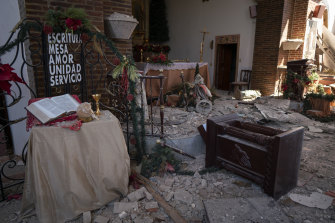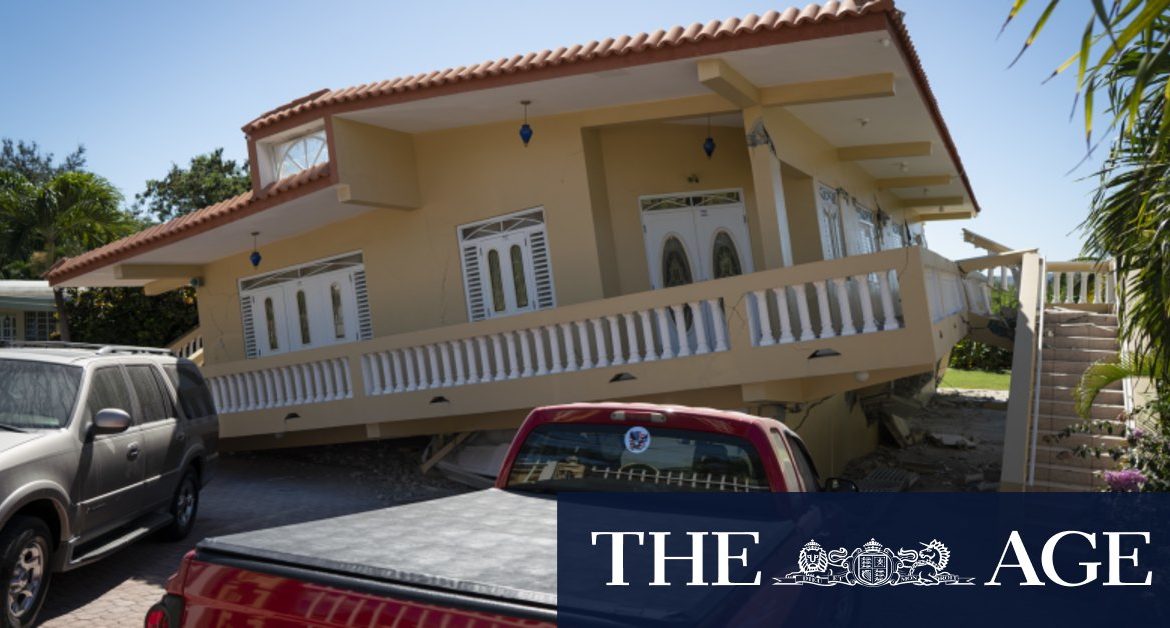The first tremor occurred at 1.02am local time with a magnitude of 3.3 in the Guánica area. The epicentre of this natural phenomenon was about 10 kilometre southeast of Guánica with a depth of about 12 km.
The earthquake with the highest intensity was reported at noon with an intensity of 4.8, according to the Red Sísmica. The epicentre was located in the south of the island, near the seismic zone where the earthquakes have been concentrated.
A Puerto Rican flag sits in a pile of rubble after a 6.4 earthquake hit just south of the island in January. Credit:Getty
The movements on the island began almost a year ago on December 28 when a 4.7 magnitude earthquake was recorded in the same geographical area as the tremors that were reported on Thursday. On January 6, when the island was celebrating Three Kings Day (also known as the Epiphany), there was an earthquake with a magnitude of 5.7 in the southern area.
The following day, a 6.4 second earthquake caused the collapse of the island’s electrical system, heavy landslides and great destruction in multiple areas.
Earth movements in Puerto Rico are being investigated by scientists analysing the Punta Montalva fault located in the area southeast of Guánica.
Meteorologist Ada Monzón has urged everyone to remain calm and be prepared. “You are the ones who know what a 6.4 tremor feels like,” he said on social media.
Monzón also explained that the tremors “do not recognise dates” and asked not to focus on the fact that in four days the year of the first recorded earth movement on the island would be completed.

Parroquia Inmaculada Concepción church was heavily damaged after a 6.4 earthquake hit.Credit:Getty Images
She urged people to be vigilant about the situation and not let their guard down.
The latest earthquake, the strongest one thus far, is one of the more than 15 tremors recorded by the Puerto Rico Seismic Network on Thursday.
TNS







